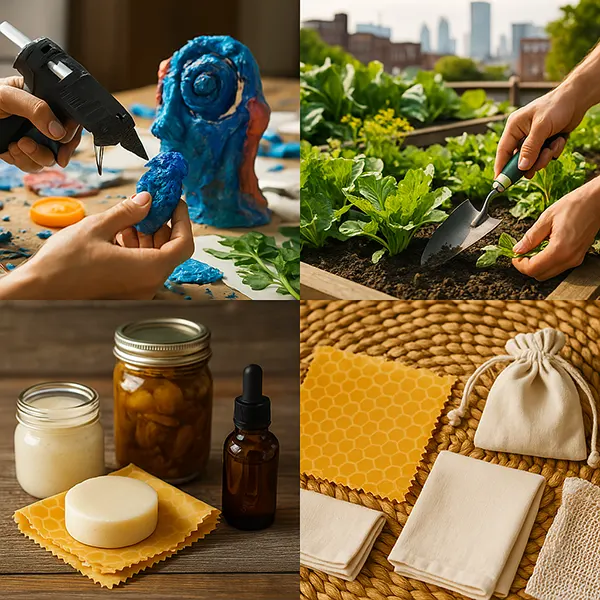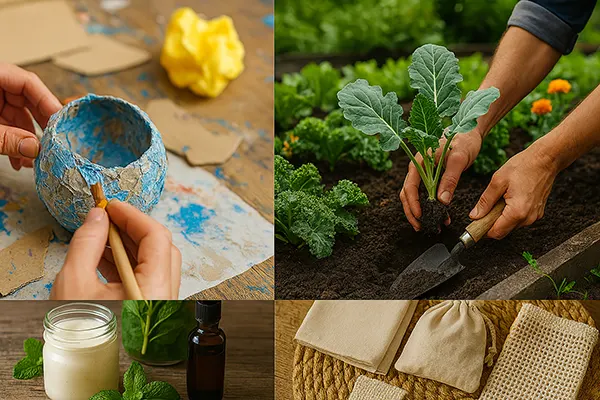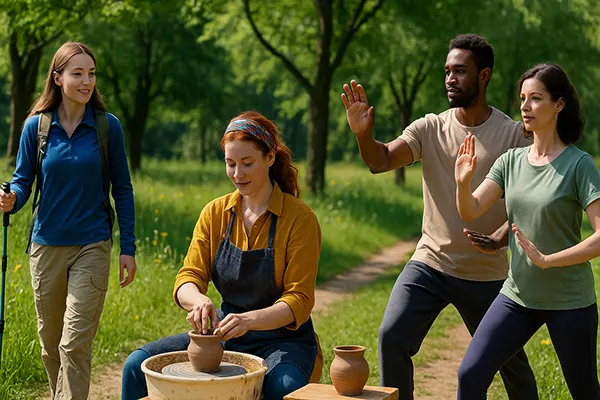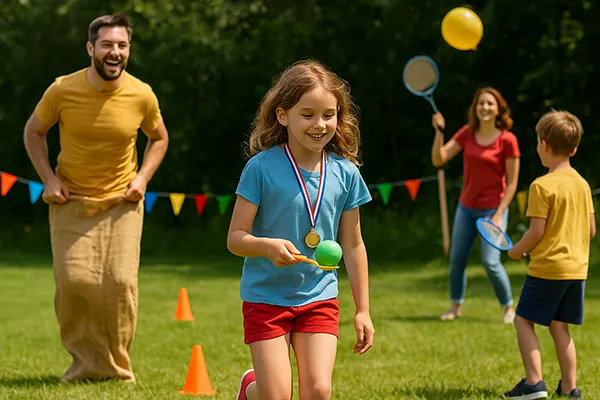Eco Hobbies of the Future: Combining Passion with Planet Care
As global awareness of the climate crisis grows, so does the interest in sustainable and mindful lifestyles. For many, leisure is no longer just about enjoyment — it’s about purpose. Eco-friendly hobbies are taking centre stage, not only as a means of relaxation but also as an impactful way to contribute to environmental wellbeing. The trends of February 2025 highlight a clear shift: people want to spend their free time meaningfully, with hobbies that align with their values and support the planet.
Creative Reuse: Upcycling as Art
Upcycling has transcended its utilitarian roots and entered the world of artistic expression. What used to be seen as mere waste is now viewed as raw material for unique and valuable creations. In cities like Berlin and Copenhagen, workshops and exhibitions showcase sculptures, furniture, and home décor made entirely from repurposed materials. This creative reuse not only reduces landfill waste but also challenges the consumer culture of constant buying and discarding.
Artists and hobbyists are now forming local communities to exchange discarded materials — broken ceramics, old wood panels, vintage fabrics — and breathe new life into them through art. The growing movement encourages participants to see beauty in imperfection and to innovate sustainably. With social media amplifying these projects, upcycled artworks are rapidly becoming desirable, one-of-a-kind treasures.
What sets this hobby apart in 2025 is the integration of sustainability with self-expression. Many eco-artists hold workshops for children and adults, turning upcycling into a tool for education and empowerment. It is not only about saving the planet — it is also about storytelling, heritage, and imagination redefined.
How to Start Your Upcycling Journey
Starting with upcycling is accessible and cost-effective. Begin by collecting everyday items that are no longer in use — glass jars, torn clothing, old furniture. Look for ideas online or in local communities for DIY upcycling projects. Many platforms now offer free patterns and tutorials to turn your waste into wonderful creations.
Consider collaborating with others in your neighbourhood. Community centres or online local groups often organise swap meets or creative weekends. These gatherings are ideal for sharing tools, materials, and ideas. They also cultivate social ties, making your eco-hobby even more fulfilling.
Above all, keep a mindset of experimentation. Mistakes are part of the creative process. Whether you’re crafting a lampshade from plastic bottles or stitching a bag from old curtains, every piece adds to a culture of mindful consumption and conscious making.
Biogardening and Permaculture: Green Spaces with a Purpose
Biogardening — cultivating plants in harmony with natural ecosystems — is gaining traction in both rural and urban environments. This form of gardening embraces composting, natural fertilisers, and native plants to restore biodiversity and soil health. In February 2025, it’s more than a hobby — it’s a movement. People turn rooftops, balconies, and community plots into thriving green sanctuaries that support pollinators, reduce air pollution, and foster mental wellness.
Permaculture takes this concept further. It promotes the design of self-sustaining systems that mirror natural ecosystems. Enthusiasts use recycled water, companion planting, and closed-loop systems to create gardens that regenerate themselves. As cities struggle with food security and ecological stress, permaculture has become a practical, impactful way to contribute locally.
From vertical gardens to edible landscapes, the popularity of permaculture also lies in its versatility. It appeals to apartment dwellers, suburban families, and retirees alike. With minimal investment, one can start growing herbs, vegetables, and even fruits — transforming passive green spaces into active food forests.
Getting Started with Sustainable Gardening
First, assess the space available — even a windowsill is enough to grow fresh herbs or microgreens. Opt for native plants, as they require less maintenance and support local biodiversity. Choose peat-free compost and organic seeds to reduce your environmental footprint from the outset.
Composting kitchen scraps is a powerful addition to your biogardening routine. Not only does it minimise waste, but it also enhances soil health. You can use compost bins or bokashi systems for indoor setups. These tools make nutrient-rich soil from leftovers in just a few weeks.
Join a permaculture course or visit a local eco-garden to get practical guidance. Many communities offer free or donation-based gardening days. These experiences not only teach you valuable skills but also create opportunities to connect with other eco-conscious individuals in your area.

Zero Waste DIY: Creating with Purpose
The zero waste lifestyle continues to evolve, and in 2025, DIY enthusiasts are finding innovative ways to align creativity with environmental principles. From crafting reusable beeswax wraps to sewing cloth alternatives to disposable wipes, each project represents a step toward a cleaner planet. These small-scale crafts offer tangible benefits, reducing dependence on single-use items while adding beauty and individuality to daily routines.
Beyond practicality, zero waste DIY also nurtures a deeper awareness of production and consumption cycles. When you create your own cosmetics, cleaning products, or kitchen tools, you regain control over the materials and methods used. This transparency leads to safer, more sustainable living, free from unnecessary packaging and chemicals.
These hobbies are also deeply empowering. By making your own household goods, you reduce reliance on commercial supply chains and contribute to a circular economy. More importantly, you inspire others to reconsider their habits, one handmade alternative at a time.
DIY Ideas for a Greener Lifestyle
Start with simple swaps: create reusable cotton pads from old T-shirts, or repurpose glass jars into stylish food containers. These projects are beginner-friendly and require minimal tools. Focus on reusing materials you already have instead of buying new ones.
Another great idea is homemade cleaning products. Using vinegar, baking soda, and essential oils, you can craft effective and eco-safe solutions for your kitchen, bathroom, and laundry. This not only cuts costs but also reduces the need for plastic packaging.
For the creatively inclined, handmade personal care products — such as solid shampoo bars or herbal lip balms — are both fun and functional. Sharing these creations with friends or at local markets also fosters community and spreads the message of sustainable, responsible living.





